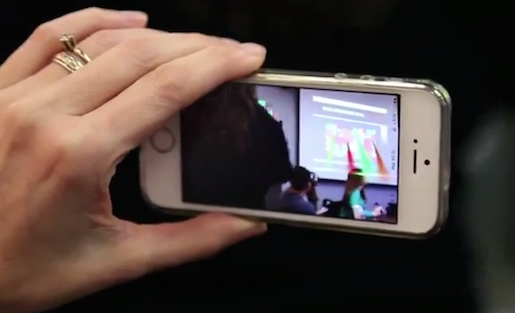Reported by Reuben Stern and Olga Kyle.
This week, we show you a tool for creating interactive video and learn how a group of journalism students are informing people via augmented reality.
PART 1: Creating interactive video with Treehouse
Treehouse is a recently launched self-serve tool that enables anyone to create interactive videos in which the viewer controls his or her own unique path through the material. We learn how it works from Alon Benari, vice president creative and innovation at Interlude, which created the tool.
Reporting by Paige Hornor.
[To skip directly to this segment in YouTube, click here.]
Our experiment with Treehouse:
We reconfigured this week’s Futures Lab episode using Treehouse (follow this link). This version allow you to select the story package you’d like to see first after the show’s intro, and then you can steer where you go next after that first story.
The interactive format works best with individual video clips planned and edited to provide multiple pathways. This may include editing in transition shots at the beginning or end of each clip before uploading into Treehouse to create a smooth visual progression. The Treehouse interface was clear enough to learn by trial and error, but the Interlude website also includes an interactive video tutorial.
Other interactive video tools:
- More than a dozen interactive video technologies are included in this list from Brightcove.
- Additional tools can be found in this list from POV.
Additional Futures Lab coverage of interactive video:
In this report, we explore Frontline’s award-winning interactive video “A Perfect Terrorist: David Coleman Headley’s Web of Betrayal,” which was built using Mozilla’s Popcorn.js framework and additional HTML 5 and JavaScript code.
PART 2: Experimenting with augmented reality
A group of journalism students at the University of Southern California experimented with augmented reality and created a mobile app that adds a layer of digital content atop physical objects inside the Los Angeles Public Library. We learn how the project fits with the evolution of journalism from USC Assistant Professor Robert Hernandez.
Reporting by Ninh Pham.
[To skip directly to this segment in YouTube, click here.]
For more information:
More details about the project, along with video demonstrating the technology and links to several augmented reality platforms, can be found in this article from the student-run digital news outlet Neon Tommy.
The work was also documented along the way on the a class Tumblr site.
The USC Annenberg School for Communication and Journalism also created a longer video report on the project.
Reuben Stern is the deputy director of the Futures Lab at the Reynolds Journalism Institute and host and co-producer of the weekly Futures Lab video update.
The Reynolds Journalism Institute’s Futures Lab video update features a roundup of fresh ideas, techniques and developments to help spark innovation and change in newsrooms across all media platforms. Visit the RJI website for the full archive of Futures Lab videos, or download the iPad app to watch the show wherever you go. You can also sign up to receive email notification of each new episode.


